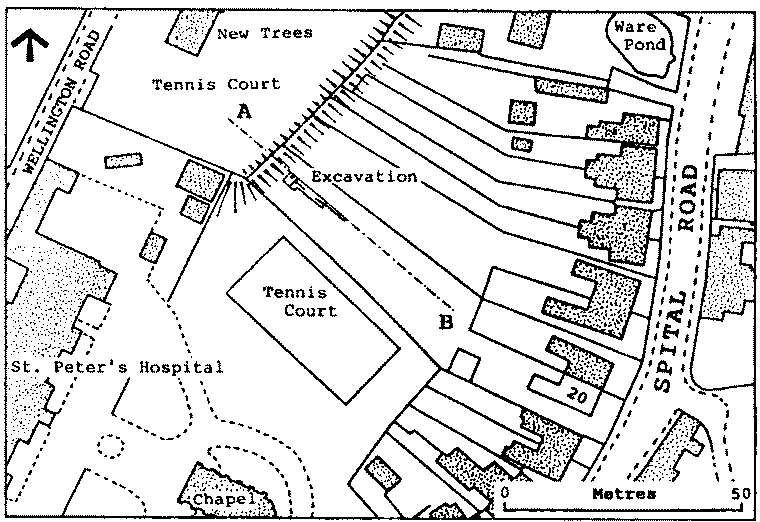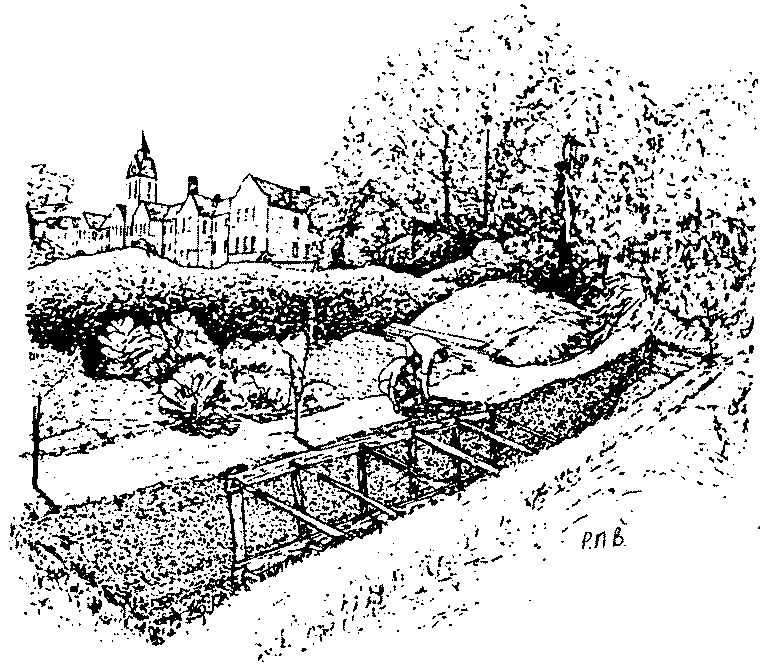
|
|



Elements of Trench Section
- Early Iron Age pit or posthole projected onto section.
- Earliest cut of main ditch - Most likely to be Iron Age.
- Early ditch bottom with similar fill to '2'.
- Main ditch section, the only primary silt finds were Roman. Most likely candidate for late Saxon burh earthworks.
- A shallow ditch cut which produced mainly Early Iron Age pottery but two very small Medieval sherds.
- A small gulley or palisade slot.
- Main fill of the earth bank.
- Distinctive layer of buried turf line and topsoil which is probably the surface visible to the 18th century antiquarians.
- Buried topsoil which could have been deposited as early as the Napoleonic scare but may also be connected with the building of the 1879 Workhouse (now St. Peter's Hospital).
- Modern topsoil.
|
The earth bank had been noted some years ago but had not received any special
attention or protection. We are therefore indebted to the Thorneloe family for
allowing us to carry out the excavation in their back garden during most of
1985 and the beginning of 1986.

Originally, two trenches were planned to give a complete cross-section of the bank but owing to the time expended on the first lower trench and the evidence it produced the second was not excavated. The deep waterlogged trench required shoring and continual pumping out in the latter stages, posing new problems for us and prolonging the investigation. We were able to make good use of the electric pump awarded to the Group in 1981 by the Lloyds Bank Equipment Fund.
The excavation has been the key to locating an ancient earthwork but unfortunately has failed to produce obvious late Saxon artifacts. We had particularly hoped for distinctive shell tempered pottery of a type common from excavations elsewhere in Maldon. e.g. Tesco's Site, Lloyds Bank Site, and Bull Lane trench. We should not necessarily expect much from such a small excavation which was probably some distance from the main occupation. Neither do we know just how common this type of pottery was in the mid-tenth century or how long the actual burh was occupied.
The early Iron Age evidence is also tantalising because of the lack of primary, well stratified finds. It is odd that the best candidate for the early Iron Age ditch was devoid of pottery while most other soils appeared saturated with flint-gritted sherds.

|
|

|

|